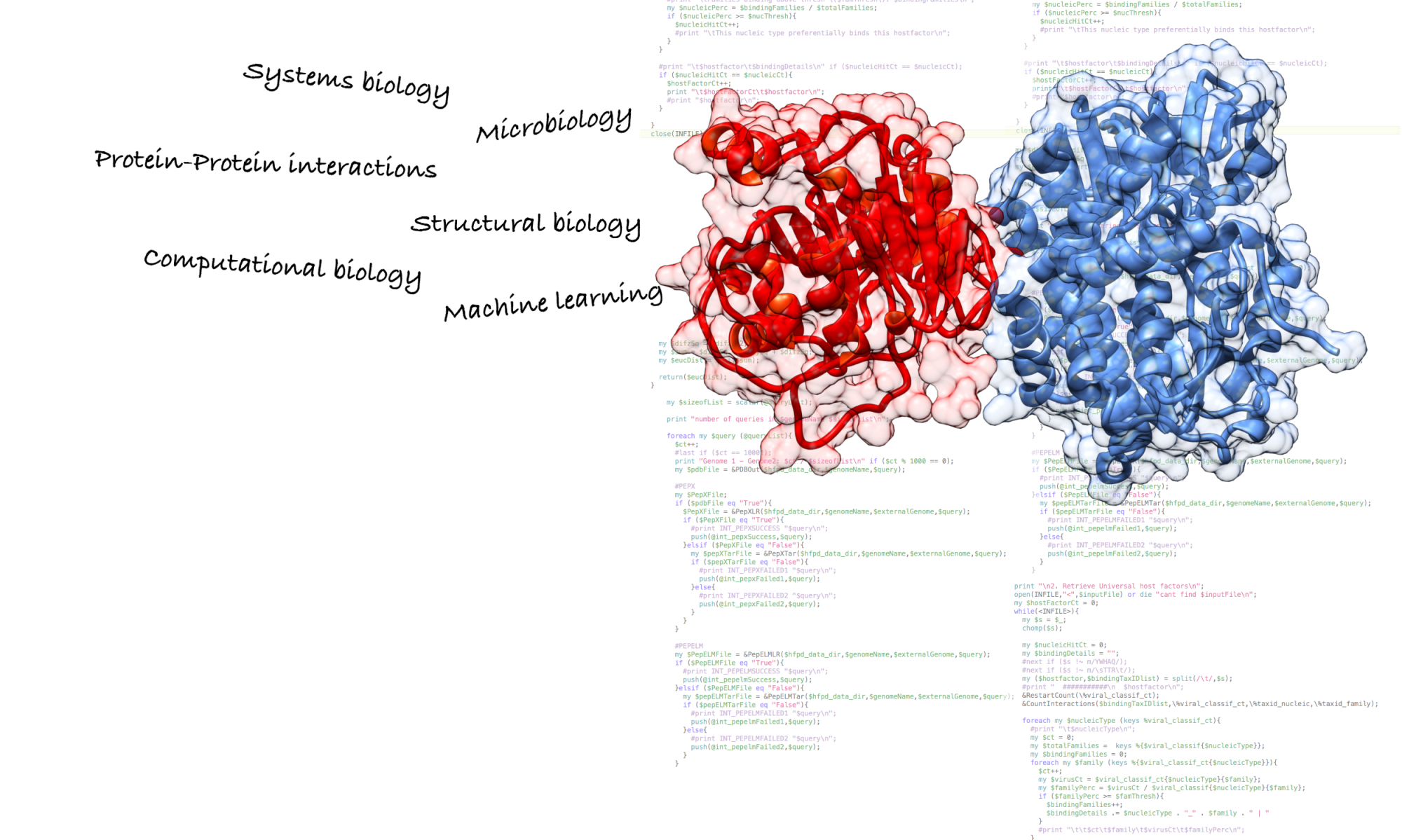Last Wednesday I went to Pamplona to take part in the science week events organized by Universidad de Navarra. This is the university where I studied biochemistry so it was a great pleasure to be back, this time as a speaker.
I was to give a talk to the general public on the protein sequence-to-structure-to-function paradigm. Over 150 people turned up, most of them teenagers but I did recognize some familiar faces from my student years there.
My talk started at the beginning of everything. At a point where all atoms in the universe where compacted into a single point, of the size of a single atom. The point that led to the so-called Big bang, a huge explosion that originated the majority of proton and helium nuclei in our universe. Gravity collapsed these atoms into stars, which function as a nuclear reactor by combining nuclei into bigger nuclei. Our solar system was created from a stellar explosion known as supernova and gravity merged dust into planets and other celestial bodies. At that point, one planet, our planet, fell into the habitability zone that will permit life to arise. The life, as we know it, is based on the chemistry of carbon. Carbon atoms are the spinal cord of all organic molecules because they can set up to four stable interactions with other carbon atoms or non-carbon atoms, leading to a wide variety of organic compounds.
Proteins are composed of a basic unit called amino acids. Amino acids dictate how the protein will fold, and it is its folded structure that ultimately determines protein function. Amino acids share a basic structure but they all differ on their lateral chain. This chain gives to each amino acid particular physicochemical properties, which play a key role in protein folding. Protein folding occurs in various stages. First, as alpha helices and Beta sheets and then by establishing intra-molecular interactions between the secondary structure elements. One of the forces driving the protein folding is known as the hydrophobic effect, according to which hydrophobic amino acids will cluster inside the molecule away from water molecules… but is the structure sufficient to dictate the molecular function of a protein? No, in most of the cases. The great majority of proteins do have an intrinsic flexibility that is essential in order to carry out the designated function. Proteins carry out most of the jobs a cell needs to do. Protein function can be classified into: enzymatic, immunological, transport, signal transduction, structural and motility. Proteins do work in an orchestrated manner and if a single protein fails to carry out its function a whole biological pathway can be affected.
One of the causes that can lead into a disease state is precisely the malfunction of a protein. Such malfunction can be originated by a mutation in the corresponding gene. Mutations might affect amino acids that are essential for the function of a protein or for the folding. For example, cystic fibrosis occurs because a mutation in the chloride channel gene does not permit for chloride channels to transport this ion through the cell membrane. This affects the water balance and results in a think mucus coating. The lungs is one of the most affected organs by this malfunctioning protein, increasing the risk of infections and difficulty to breathe. P53 , also known as the guardian of the genome, is a tummor supressor that avoids damaged DNA to be transmitted to the next generation of cells. More than 50% of human cancers have shown that P53 contains mutations that alter its function.
And to finish off my talk, I discussed the importance of science in our world. Not only as a source of progress and economic wealth but as a powerful tool to educate younger generations and make a better world. Science is one of the basic pillars our society is based on and consequently governments should do a better job in protecting and promoting science regardless of the circumstances.
Overall, this was a great experience. Not only for contributing to make science more popular among youngsters (the best audience I could ever had) but also for returning to my home university.. walking through the corridors brought back so many memories that I almost felt as if I was still studying there.I have made the presentation freely available to everyone, just follow the link
